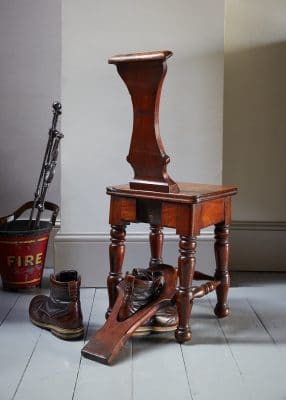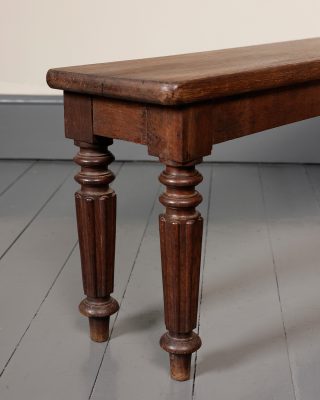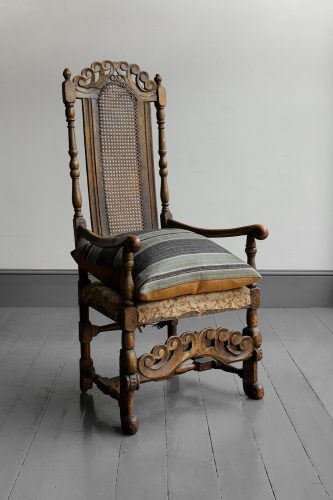
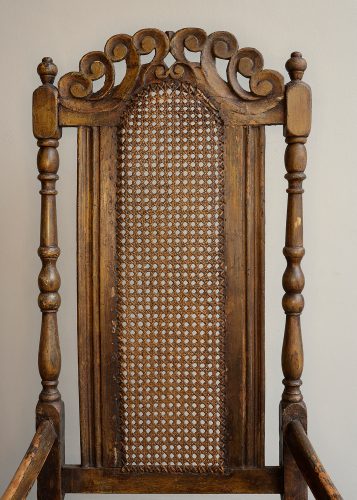
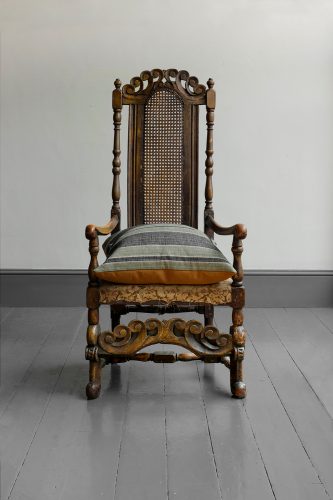
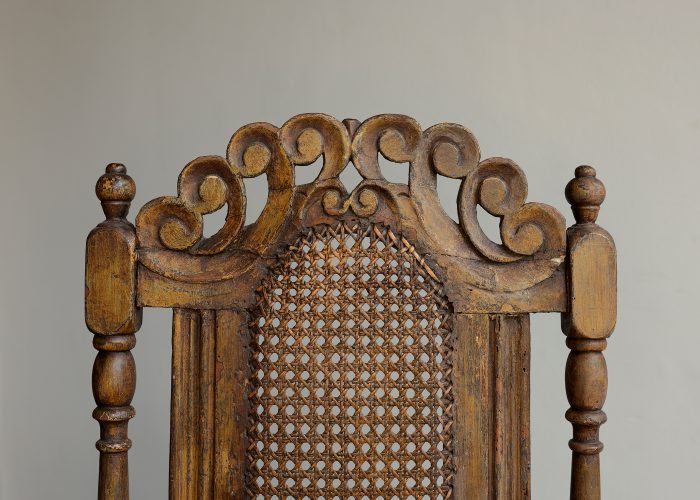
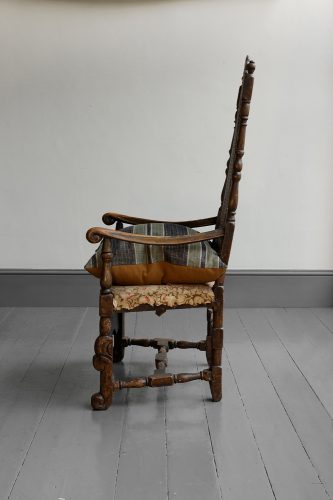
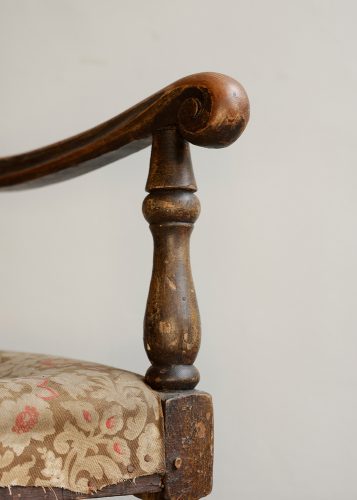
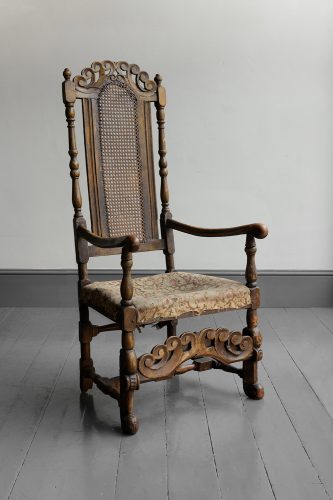
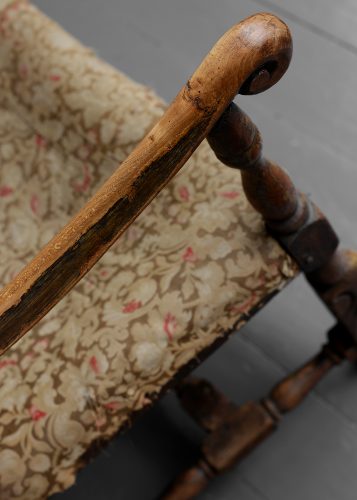



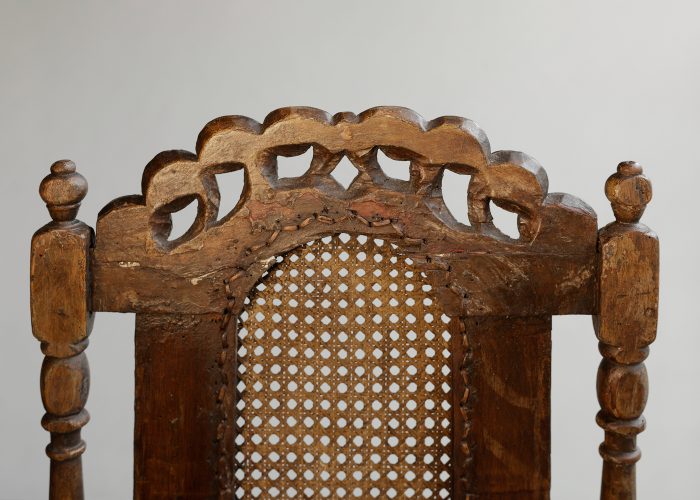
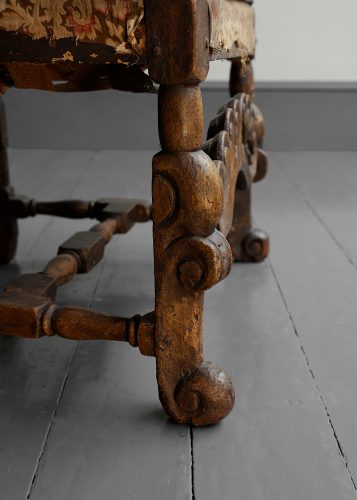
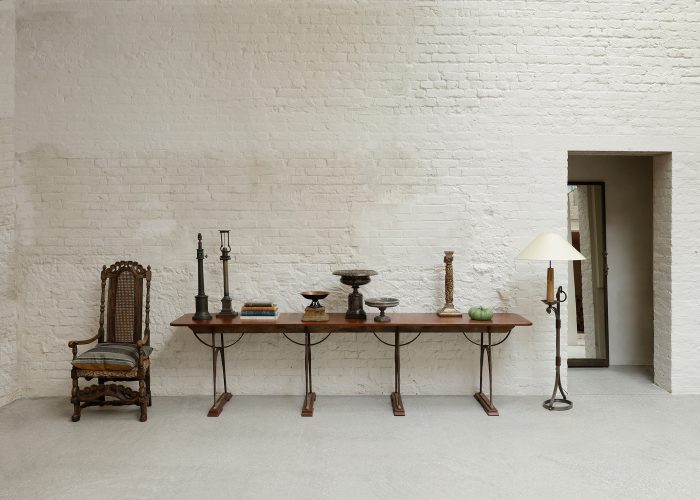
A C17th ‘Carolean’ Beech and Cane Armchair
A ‘Carolean’ beech and cane high-back armchair, second half of the 17th century.
This is a charming variation on the characteristic caned high-back chairs of the second half of the 17th-century. After the Cromwellian period the Restoration of the monarchy under Charles II in 1660 ushered in a period of luxury with the introduction of bold new furniture styles and interior designs. The redecoration of royal palaces created opportunities for furniture makers across the British isles – stately bed parlours with suits of chairs, chests, mirrors, and the signature ornate bed hung sumptuously with velvets and silk damasks were the order of the day.
These chairs featured prominently throughout 17th-century domestic arrangements – in large houses with parlours, long galleries, ball rooms, and libraries, sets of caned high-back chairs formed an integral part of the rich furnishings. Chastleton House in Oxfordshire, where the first domestic inventory was taken in 1633, is a good example where a variety of chair styles are present. Chairs were supplied with either upholstered or caned seats. Squab cushions covered in velvet or needlework wool fabrics were extensively used for chairs with the later seat type.
The stylised scrolls in the crest of the back frame, the front carved stretcher, and the simplified front leg profile set this chair apart from the characteristically intricate and densely arranged scrolls and foliate motifs seen in other high-back chairs of the period, sometimes also known as ‘Dutch’ chairs. Variations on the theme were popular in the British Isles as well as in Flanders and Holland.
The tall, caned chair-back in this example is set in a simple grooved frame flanked by baluster-turned supports capped with turned finials. The bowed crest features C-srolls in a wave-like progression. The outscrolled arms end in plain knobs on baluster-turned supports raised on stylised scroll feet. The legs are joined by a baluster-turned H-stretcher with a further carved front stretcher echoing the deep carving of the chair-back.
The traces of paintwork on this chair recall the painted, gilded and japanned surfaces fashionable in the last quarter of the 17th-century. A side chair with a similar crest and front stretcher is illustrated in Herbert Cescinsky, English Furniture from Gothic to Sheraton, New York, 1937, p. 107.
Dimensions
Max Width: 600mm / 23¾"Max Depth: 590mm / 23¼"
Max Height: 1270mm / 50"
Seat Depth: 430mm / 17"
Seat Height: 440mm / 17¼"
